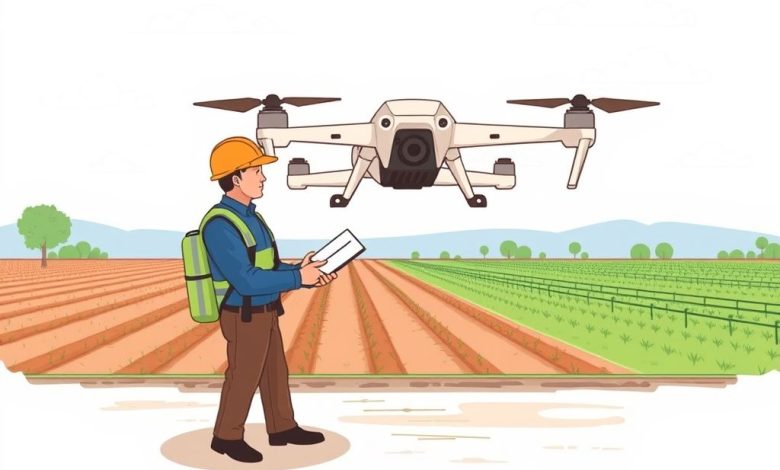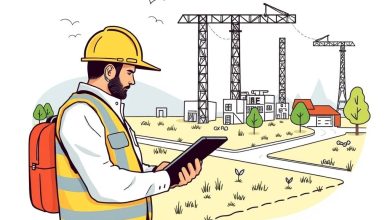Field Service Management for Drone-Based Aerial Work Orders Revolutionizing Inspection and Maintenance Operations

Introduction
Field Service Management (FSM) has evolved significantly over the years, driven by technological advancements and changing customer expectations. One such innovation that is revolutionizing the industry is the integration of drones in aerial work orders. This technology combines the efficiency of drone-based inspections with the power of FSM software, creating a more streamlined and cost-effective approach to managing field services.
The Rise of Drone Technology in Field Services
Drones have become increasingly popular in various industries, including construction, agriculture, and infrastructure inspection. Their ability to capture high-resolution images from unique angles has made them invaluable tools for assessing damage, monitoring progress, and identifying potential issues. In the context of field service management, drones offer several advantages:
- Reduced time spent on site visits
- Improved safety for workers
- Enhanced accuracy in data collection
- Cost savings through reduced travel time and equipment usage
How Drone-Based Aerial Work Orders Work
Drone-based aerial work orders typically involve the following steps:
- Scheduling: Customers request a service visit through a mobile app or website.
- Dispatch: The FSM system assigns the nearest available technician equipped with a drone.
- Flight Planning: The technician plans the drone flight path based on the job requirements.
- Data Capture: The drone captures high-resolution images and videos during the flight.
- Analysis: The collected data is analyzed using specialized software.
- Reporting: A detailed report is generated, highlighting any issues or areas requiring attention.
Benefits of Drone-Based Aerial Work Orders
Implementing drone-based aerial work orders in field service management offers numerous benefits:
Increased Efficiency
By reducing the need for physical site visits, drone technology allows technicians to complete more jobs in less time. This increased efficiency translates to higher productivity and better utilization of resources.
Improved Accuracy
Drones equipped with high-resolution cameras can capture images from angles that would be impossible for human inspectors. This leads to more accurate assessments and fewer missed issues.
Enhanced Safety
Technicians are exposed to fewer risks when conducting inspections remotely. This is particularly beneficial in hazardous environments or hard-to-reach locations.
Cost Savings
Reduced travel time and lower equipment costs contribute to significant savings for businesses implementing drone technology.
Environmental Impact
By minimizing the number of physical site visits, companies can reduce their carbon footprint and contribute to a more sustainable future.
Challenges and Considerations
While drone-based aerial work orders offer numerous advantages, there are also challenges to consider:
Regulatory Compliance
Different regions have varying regulations regarding drone usage. Companies must ensure compliance with local laws and obtain necessary permits.
Privacy Concerns
There may be concerns about privacy when capturing images of private properties. Businesses must implement robust data protection measures and obtain proper consent from property owners.
Technical Expertise
Implementing and maintaining drone technology requires specialized knowledge. Companies may need to invest in training their staff or hire dedicated drone operators.
Equipment Maintenance
Regular maintenance of drones and associated equipment is crucial to ensure reliability and longevity.
Case Studies
Several companies have successfully implemented drone-based aerial work orders in their field service management strategies:
Utility Company Example
A major utility company replaced traditional helicopter-based inspections with drone technology. They reported a 30% reduction in inspection costs and a 25% increase in the number of inspections completed per day.
Construction Site Monitoring
A large construction firm used drones to monitor progress and identify potential safety hazards. This led to a 15% reduction in accidents and a 20% improvement in project completion times.
Agricultural Crop Assessment
An agricultural services provider utilized drones to assess crop health and yield predictions. They achieved a 95% accuracy rate in their assessments, leading to more informed decision-making and improved resource allocation.
Conclusion
Field Service Management for Drone-Based Aerial Work Orders represents a significant leap forward in the industry. By combining cutting-edge technology with efficient software solutions, companies can streamline their operations, improve accuracy, and enhance overall customer satisfaction.
As this technology continues to evolve, it’s likely we’ll see even more innovative applications in the future. For field service managers looking to stay ahead of the curve, embracing drone-based aerial work orders could be the key to unlocking greater efficiency and competitiveness in their business.
Remember, while the benefits are substantial, it’s crucial to address the challenges head-on, ensuring regulatory compliance, protecting privacy, and investing in the necessary expertise and equipment. With careful implementation, drone-based aerial work orders can be a powerful tool in modern field service management.



